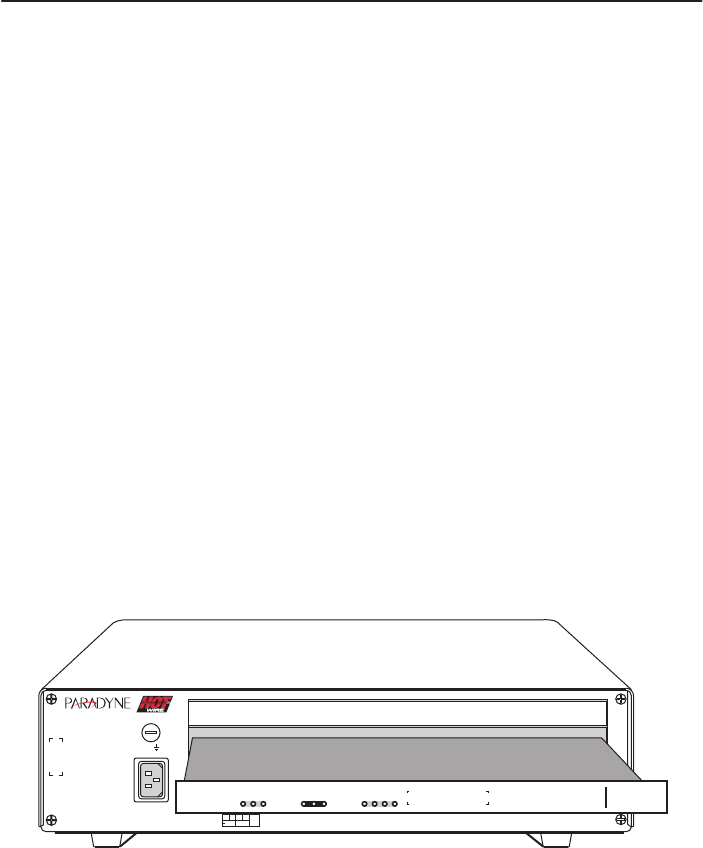
19
When swapping a new card for an old card, it is important to note that the 8610 DSLAM
retains the Media Access Control (MAC) address, also referred to as the physical
address. This means that the new card will have the same MAC address as the old
one.
NOTES:
— All standalone 8610 chassis (i.e., chassis that are not daisy-chained to other
Hotwire 8610 DSLAM chassis) require an MCP card in Slot 1, but only the
base chassis of a multisystem stack requires an MCP card.
— Do not discard filler plates. Each slot in the chassis must contain a circuit card
or a filler plate to maintain the required EMI shielding and to prevent air
leakage from the forced air cooling. Air leakage could result in overheating
which may cause the power to the circuit cards to be shut off. Store all unused
filler plates in a safe place. You may need to use the filler plates to cover open
slots in the chassis at a later time.
" Procedure
To install a circuit card in the Hotwire 8610 DSLAM chassis:
1. Remove the filler plate from the slot by unscrewing the mounting screws at each
end.
2. Hold the card horizontally with the components on top, and insert it into the left and
right card guides of the slot of the base chassis.
99-16321
TM
TM
STACK
POSITION
2
3
6
5
4
1
AC
INPUT
1
2
3
ESDESD
48VDC CLASS 2
OR LIMITED
PWR SOURCE
48V
A
RTN
ABB
A
B
DC FUSES
T4A, MIN. 48V
PWR
A
ALM
FAN
B
OUTIN SERIAL
ALM INTF
MCP/1
2
3
MCP/
DSL
MANAGEMENT
10 BASE T
8610
MCP
8000
SYSTEM
OK
Alrm
Test
TX
RX
Coll
ETHERNET
RADSL
8000
SYSTEM
OK
Alrm
Test
TX
RX
Col
1
2
3
4
ETHERNET
DSL PORT
3. Carefully slide the card into the slot. Gently, but firmly, push the card until it
engages its mating connectors on the backplane.
4. Press on the card’s front panel with one hand and on the back of the 8610 chassis
with the other until the card’s connector seats in its mating connector.
5. Make sure the OK SYSTEM indicator on the card’s faceplate is ON (green). If not,
refer to
Troubleshooting
on page 25.
6. Secure the card by fastening the screws on each end of the faceplate. This is
required to maintain proper gasket pressure on the faceplate as well as proper air
flow.


















